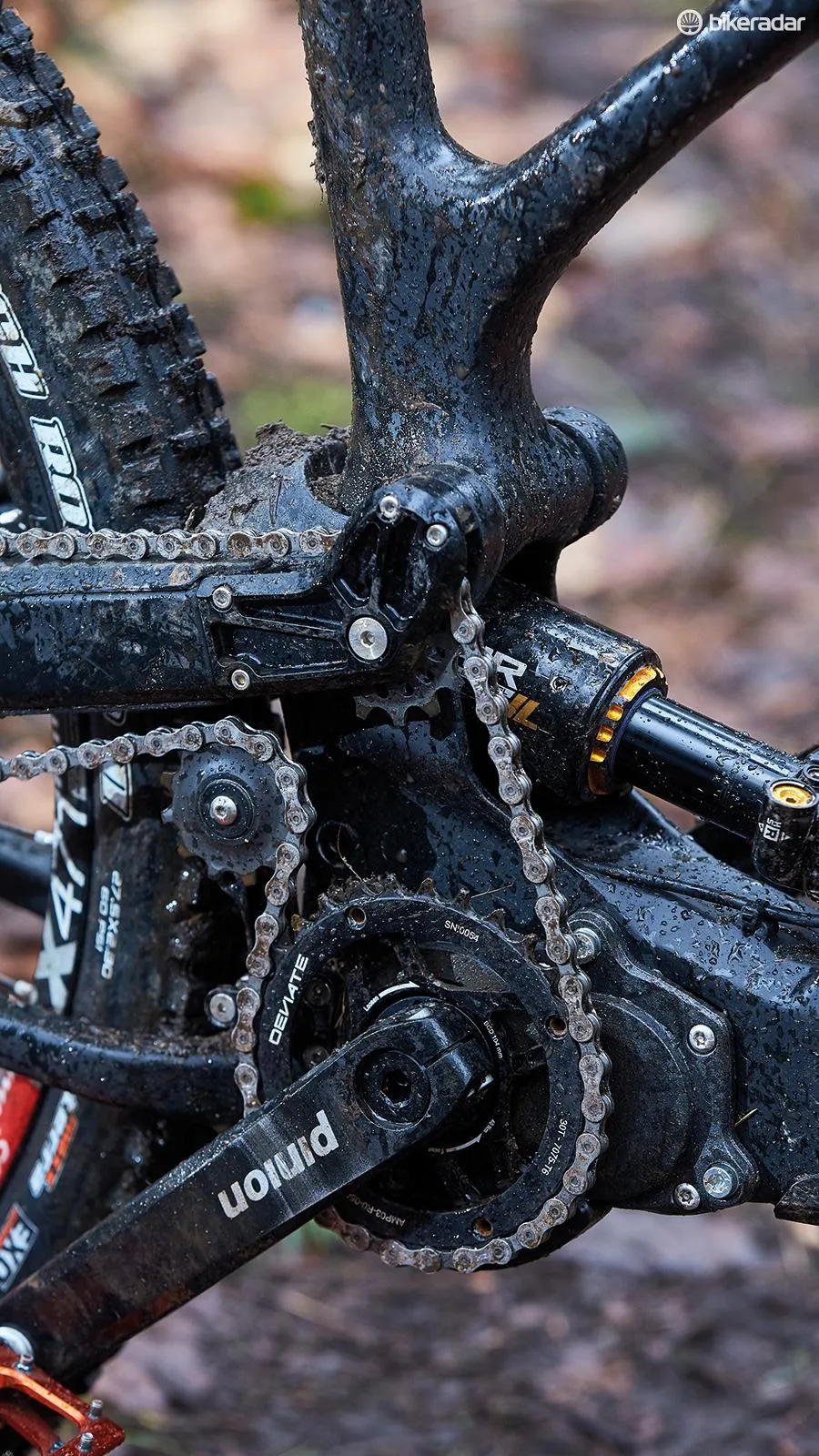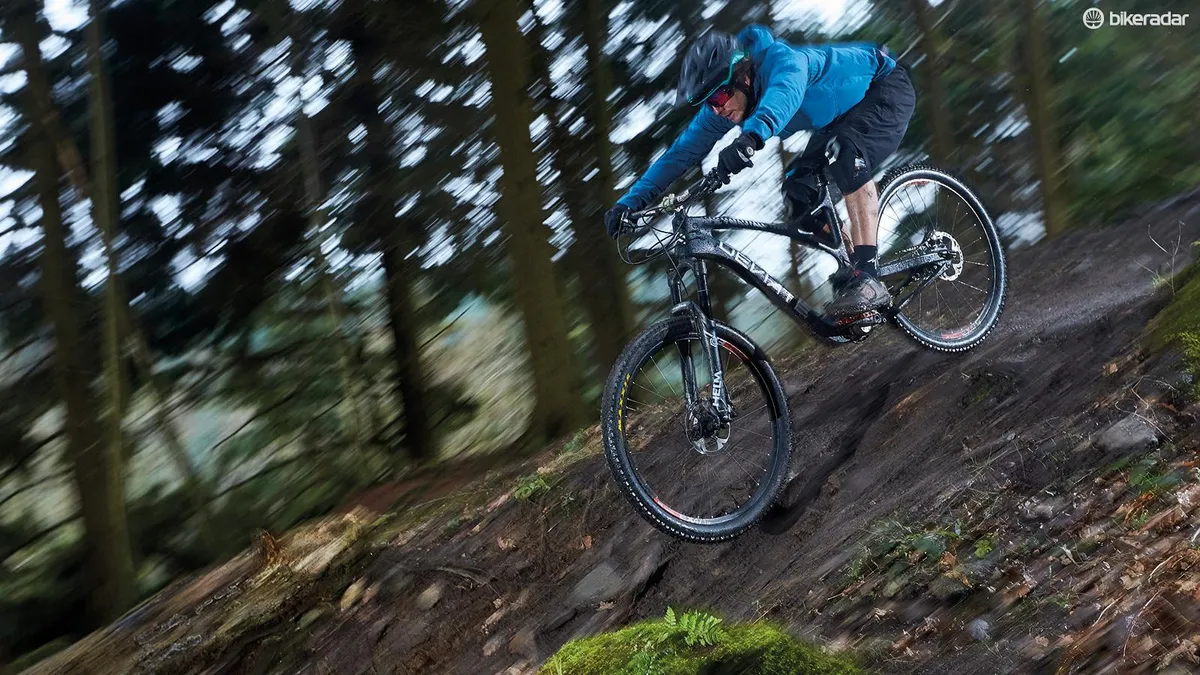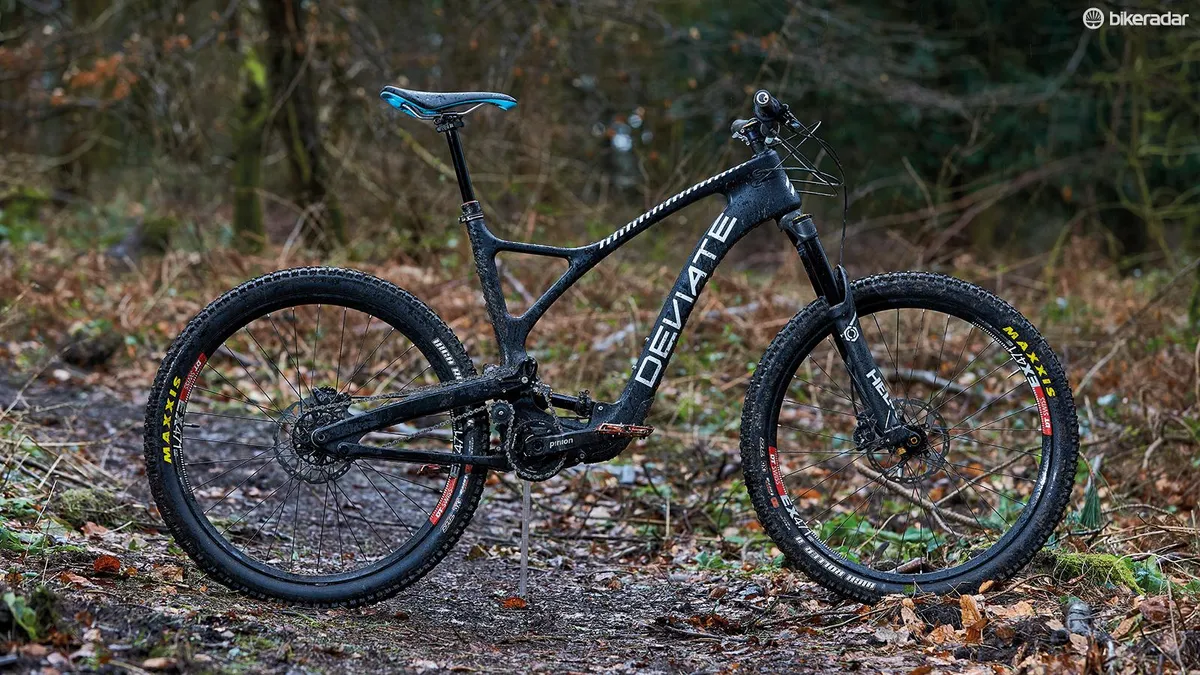The guys behind Deviate Cycles decided to develop their own bike after having disappointing experiences guiding clients through the steep terrain, roots, rocks and tight corners of some of the Alps’ gnarliest trails, day after day. But how does this translate to the everyday rider in the UK?
The frame
This is one of the more unique-looking frames on the market, thanks to the integration of a Pinion 12-speed gearbox into the bottom-bracket area — which means no rear mech hanging off the back — and its high-single-pivot suspension design.
An idler pulley routes the chain over the top of the seatstay to minimise chain growth, while a jockey wheel takes up any slack. The shock is actuated via a linkage attached to the front tips of the chainstays. Up close, the engineering and detail is like fine art.
Geometry-wise, my Large test bike had a spot-on 475mm reach, a 65.8-degree head angle and a stability-giving 440mm back end. The seat tube was steep, at 75 degrees, but long, at 495mm.
The kit

The main talking points here are the evenly spaced 600 percent gear range and minimal maintenance requirements of the twist-shifter-controlled Pinion box. In addition to that, the ‘UK’ build includes a Cane Creek DBAIR [IL] shock and Helm fork, along with Shimano XT brakes, Stan’s wheels (my test bike came with DT Swiss hoops instead, though), a 150mm 9point8 dropper and Renthal cockpit. All good stuff.
The ride
This is a bike that’s clearly been built for a purpose. The rear tyre has almost DH-bike-like levels of ground contact and grip, thanks to the Guide’s rearward axle path, low unsprung mass and minimal chain input.
It’s easy to think you’re not going that fast, because the bike never feels particularly playful. But the low-down weight, longish front end and 440mm stays offer bucketloads of stability and cornering confidence, helping you to lay down some impressive times on steeper, rougher tracks.
On flatter, pedally trails it does feel a touch sluggish, though. This is partly due to the suppleness of the suspension, but also the weight of the Pinion gearbox. With one freehub on the rear wheel and a second at the cranks, there’s a significant lag between hitting the pedals and the bike starting to move, which makes accelerating out of corners a touch frustrating.

The Pinion’s twist shifter is a bit divisive too, although it was the inability to change gear under power that frustrated me the most, especially on fast, flowy trails where I was shifting a lot.
Sizing is another issue. The seat tube on the Large bike was so long that I, at 6ft, could only run a 150mm dropper if it was completely slammed. It suited a fellow tester who was XL better, but he found the front end a bit too short.
While the Guide isn’t best suited to flowing trail rides, if you spend your time spinning up climbs and hammering steep, technical descents, you may find its impeccably controlled suspension and incredible traction a perfect match.
Specifications
- Frame: Carbon-fibre, 160mm (6.3in) travel
- Fork: Cane Creek Helm Air, 160mm (6.3in) travel
- Shock: Cane Creek DBAIR [IL]
- Drivetrain: Pinion C1.12 (1x12)
- Wheelset: Stan’s NoTubes Arch MK3 wheels
- Tyres: Maxxis High Roller II EXO 3C 27.5x2.3in
- Brakes: Shimano Deore XT, 180mm rotors
- Bar: Renthal Fatbar Carbon 35, 800mm
- Stem: Renthal Apex 35, 33mm
- Seatpost: 9point8 Fall Line 150mm dropper
- Saddle: Fabric Scoop Radius Pro Team
- Weight: 15.39kg (33.9lb), large size without pedals

